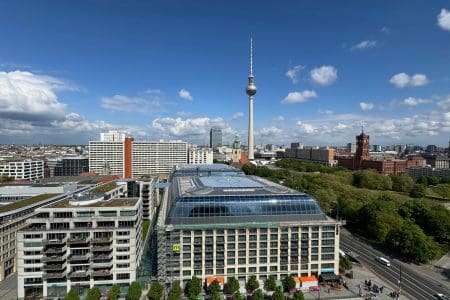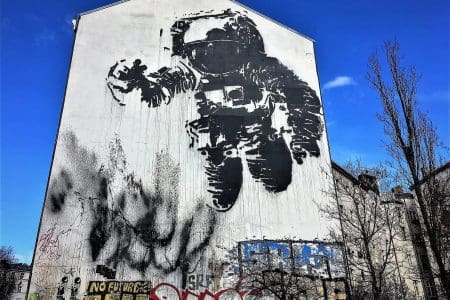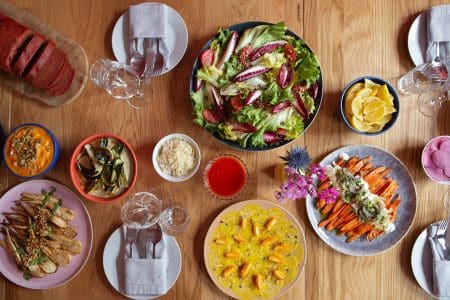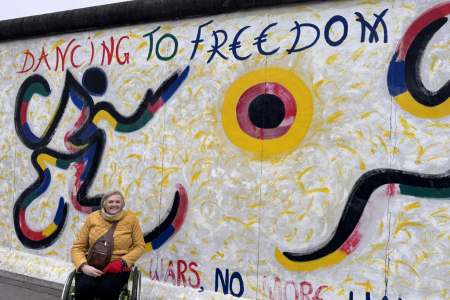Mark Bibby Jackson stays at the Wilde Aparthotels By Staycity Berlin, Checkpoint Charlie, and enjoys a sense of familiarity with both city and accommodation.
When you are staying in a city as vibrant and exciting as Berlin, it really does make sense to stay as centrally as possible. That is where Wilde Aparthotels Berlin, Checkpoint Charlie scores highly – as the name suggests it is just around the corner from one of Berlin’s major tourist attractions.
It is hard to imagine as you join the stream of tourists crossing freely from east to west Berlin posing to take their snaps at arguably the most famous border crossing in the world, that during the Cold War this was most certainly no man’s land – nor women’s either as my trip coincides with International Women’s Day.
Wilde Aparthotels Berlin, Checkpoint Charlie
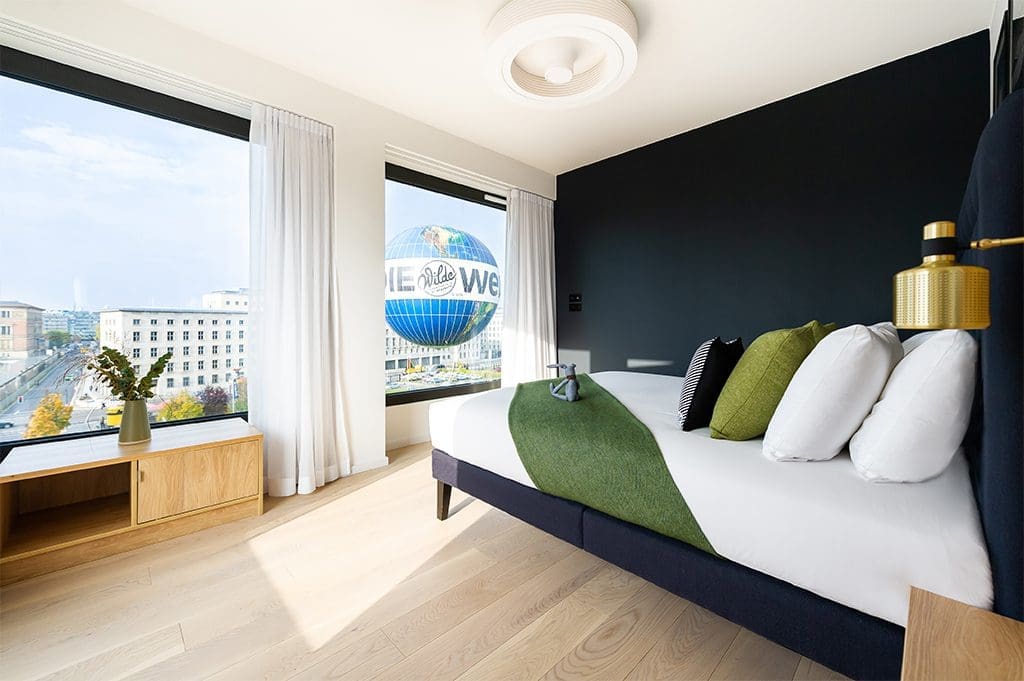
The other main attraction of my apartment is the space. A large bedroom is annexed to an even more spacious living room, with well-equipped kitchen attached, including dishwasher and microwave. The sofa turns into a bed, ideal if you are here with the family. There are also two large screen TVs so there will be no fighting on what to watch after a hard day’s sightseeing in Berlin. On hotter days than a cold snap in March the central fans would prove most welcoming.
I have been fortunate enough to stay both at a Wilde Aparthotel in Paddington London and a sister aparthotel within the Staycity Group family in Dublin. There is a familiarity to the clean, contemporary design. Wooden floorboards, dark grey tiled bath floors, and peaceful artwork on the walls, but there is also an individuality to each separate aparthotel. My apartment had large windows opening out onto an internal courtyard which provided great natural light as well as a sense of sanctuary from the streets outside. This is accommodation you can stay in for longer than the night I had booked.
Check-in was seamless and helpful, with plenty of advice for anyone who was a first-time visitor to the German capital.
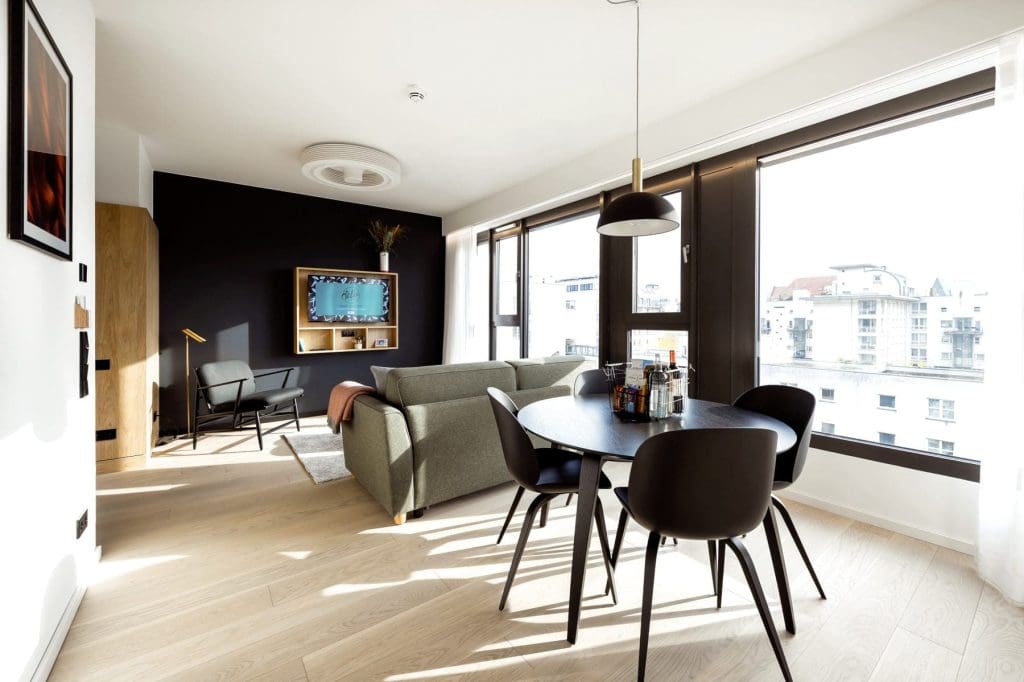
Berlin Revisited
There is no breakfast at the Aparthotel, although there is an excellent coffee machine with complimentary pods as well as SMEG toaster and kettle. I could have easily lazed around all morning brushing up on my Wilde, courtesy of the books in the room, but I had a city with which to reacquaint myself.
Berlin is a city I know well. I first came here as a youthful backpacker in the mid 90s, and have visited on an increasingly regular basis since. I usually come for the annual ITB Berlin trade show, but always combine the half marathon around the exhibition halls of Messe with a trip somewhere near Berlin. This time I went to Potsdam, which is a half hour’s train ride on the S-Bahn from the German capital – it is even included in the Berlin travel card.
However, for once I decided to bunk off from the ITB on the second day – for that read ‘give my liver a rest’ – and take in some of the main tourist attractions in Berlin, starting naturally enough at Checkpoint Charlie.
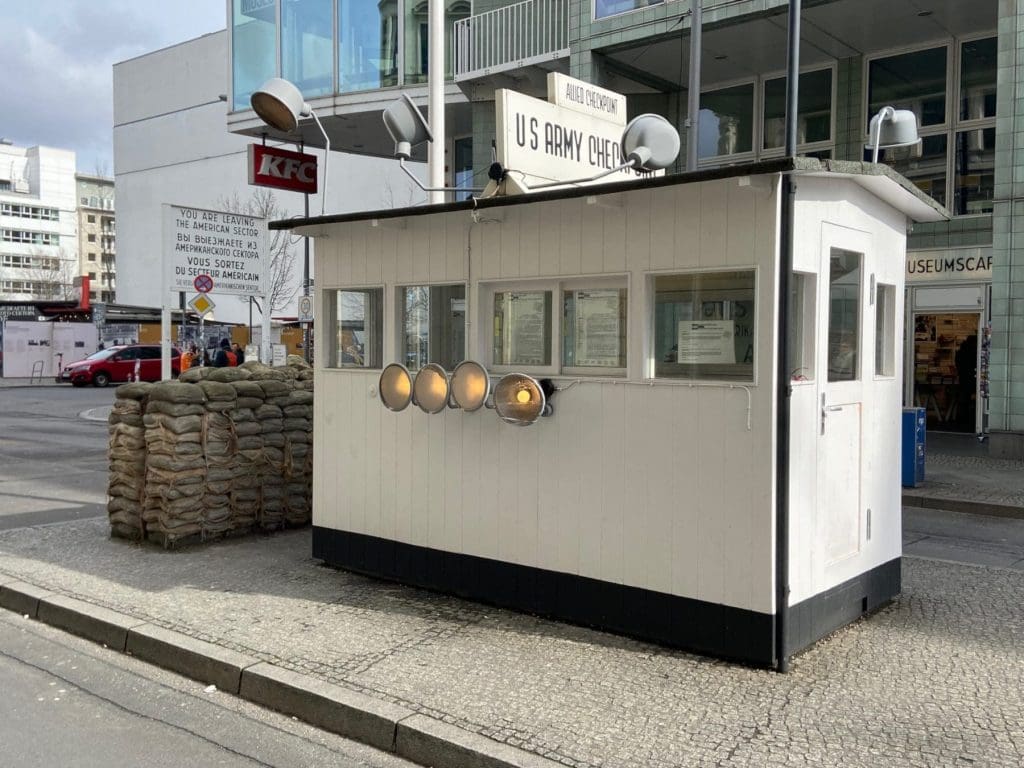
Checkpoint Charlie Berlin and the Wall
Turning left out of my aparthotel I find myself standing next to the icon of the Cold War within minutes. Checkpoint C, to give its official name, was perhaps the most visual of the border crossings between east and west Berlin. It is frequently shown in films of the period. It was also the scene of heightened tension between the US and USSR, especially during the Checkpoint Charlie standoff of 1961, shortly after the Berlin Wall was constructed. Twenty tanks stood just 100 metres apart on either side of the divide, although fortunately the dispute was settled peacefully on 28 October as tensions mounted elsewhere with the Cuban missile crisis. Next to it is the Checkpoint Charlie Museum.
After visiting Checkpoint Charlie, I suggest you pop to the East Side Gallery the longest surviving section of the Berlin Wall. If you want, as I did almost thirty years ago, you can take a photograph of Leonid Brezhnev and Erich Honecker kissing.
It takes an hour to walk between Checkpoint Charlie, and the East Side Gallery, although you can easily take the excellent public transport options in Berlin with your travel pass.
Brandenburg Gate and the Reichstag
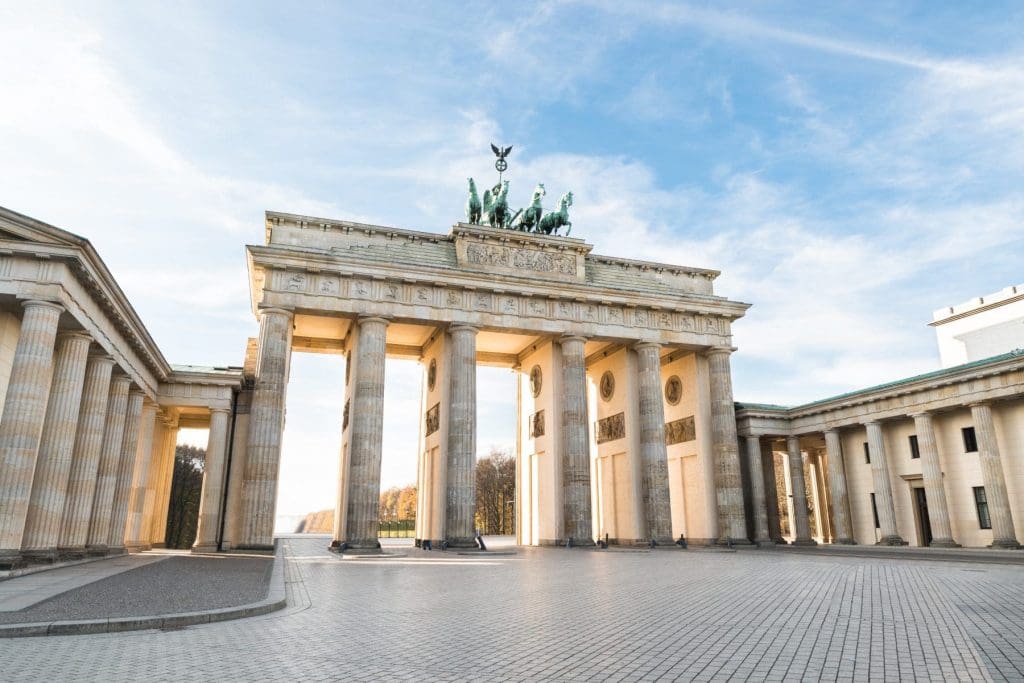
However, I continued walking up Friedrichstrasse to the treelined Unter den Linden boulevard, the most beautiful street in the German capital. Turn left and you will see the Brandenburg Gate standing in all its majesty. Built between 1788 and 1791, for Frederick William II, it was originally known as the Peace Gate, which seems most appropriate considering the symbolic role it has played in German reunification since the fall of the Wall on 9 November, 1989.
Walk through the Brandenburg Gate and you enter the glorious Tiergarden, a 210-hectare urban park – the third largest in Germany. The Tiergarden was founded in 1527, as a hunting ground for the Elector of Brandenburg. The central Siegesallee boulevard, opened in 1901, leads to the striking 67-metre-high Victory Column, inaugurated in 1873.
Just to the north of the Brandenburg Gate is the Reichstag, which houses Germany’s parliamentary lower house, the Bundestag. The original building opened in 1894, but was heavily damaged during the Second World War. It was only after German Reunification that the building was reopened to seat the parliament in 1999, after extensive reconstruction led by architect Norman Foster. The building now represents a strikingly impressive marriage between the old and new.
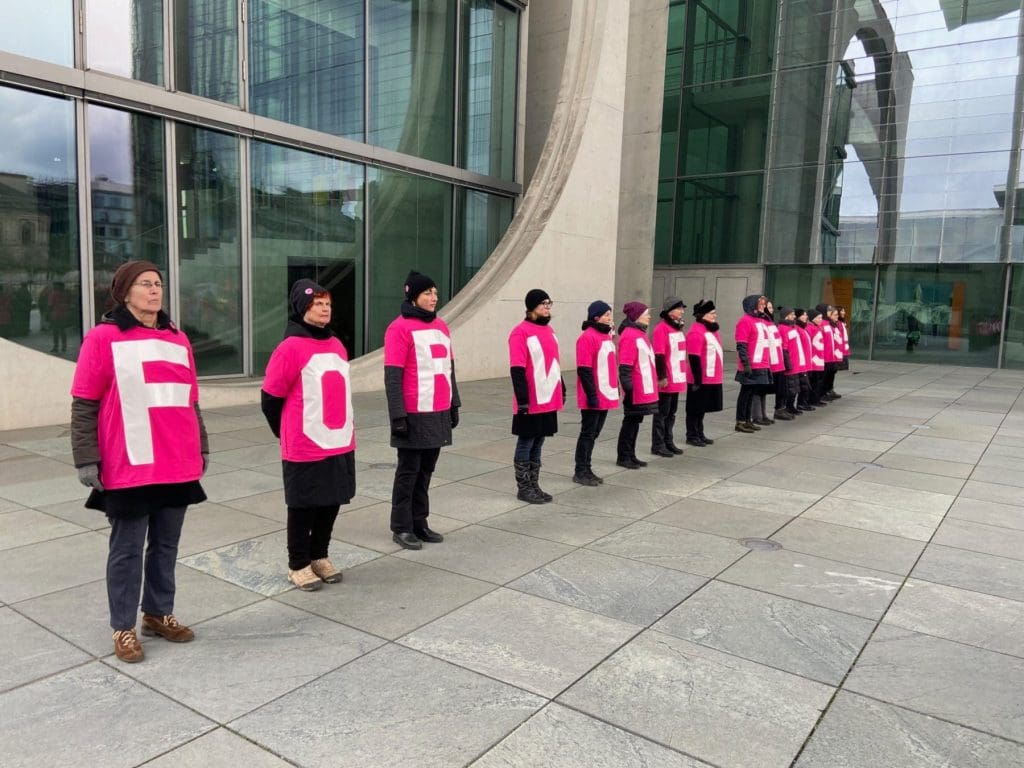
During my visit there was a demonstration for International Women’s Day, campaigning for equal rights and greater representation for women, nearby the building.
Chilling in Augustrasse
I had plenty of time on my hands despite a very generous late check out, before my flight back to the UK, so I found myself endlessly drifting along the bank of the Spree river to re-join Friedrichstrasse before heading east to my favourite street in Berlin.
Augustrasse has a similar vibe to Hoxton in London. The mix of galleries, cafés and bars makes this the perfect place to chill. I spent a couple of hours in Hockbarth’s Bar, watching people come and go, while sipping a coffee and fitfully glancing at my book.
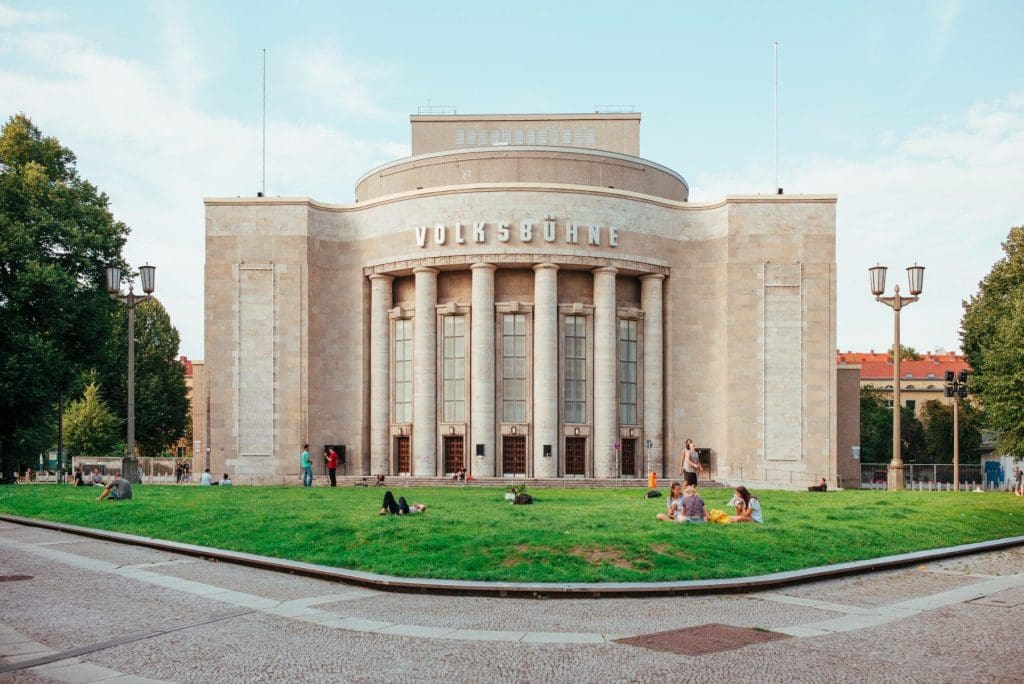
Sufficiently refreshed, I continued my pilgrimage further east for one final stop. Babylon is a quite beautiful building built in 1929 to a design by Hans Poelzig. Now an arthouse cinema it stands as a beacon of art deco. Across the street is the Volksbühne, or people’s theatre, which opened 15 years earlier and is arguably the most iconic theatre in the German capital.
Both buildings are located on Rosa-Luxemburg-Platz, the ideal conclusion to my stroll through Berlin on International Women’s Day.
Things To Do in Berlin
For more inspiration on what to do in Berlin, click here, or go to the official Visit Berlin tourism site.
Wilde Aparthotels By Staycity Berlin, Checkpoint Charlie
To book a room, click here.
